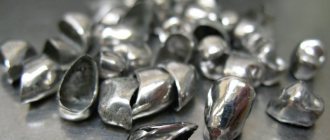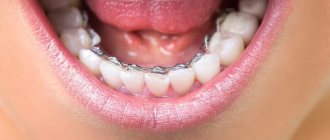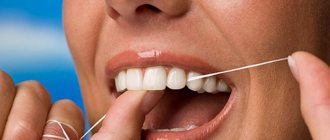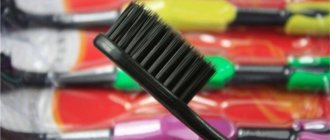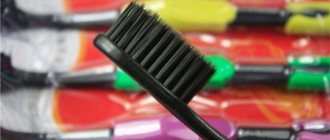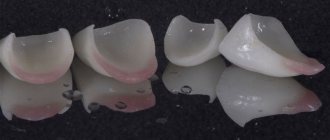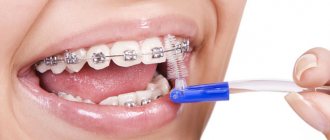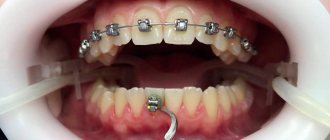Article navigation question to a specialist
Metal braces are the most common systems for correcting malocclusion. They are characterized by increased efficiency and cope with even the most complex pathologies faster than other orthodontic systems. Today, almost every manufacturer presents 1-2 models of metal braces in its product line. Modern designs have become much more convenient - smaller sizes, low profile, high-quality polished surface. Even allergic reactions can be avoided - for this purpose, models are created without the use of nickel. The article below contains a review of metal braces from well-known manufacturers.
Reflections ceramic braces (Ortho Technology, USA) for only RUR 105,000!!!
All inclusive!
Preparation and treatment of the oral cavity, taking occlusion parameters using special equipment, installing a brace system on 1 jaw, all necessary visits to the orthodontist for 1 year. Free consultation with an orthodontist +7 (495) 789-39-31 or write to us
Metal braces: pros and cons
Classic metal braces have been used in dentistry for over a hundred years. It is logical to assume that such a significant period indicates many advantages. Let's take a closer look at them.
- Metal braces are reliable and durable, so they are suitable for any clinical cases. They will help correct the most complex malocclusions and crowded teeth.
- The treatment period with metal braces will be shorter than with other systems (this is an important difference between ceramic braces and metal braces). Those patients who want to correct the defect as quickly as possible should choose them.
- Metal braces on teeth are more difficult to damage from hard food, and they are not stained by tea, coffee, wine and carbonated drinks with dyes.
- Finally, this is the most affordable type of orthodontic appliance. Getting metal braces cheaply is not difficult at all.
The disadvantages include the way metal braces look on your teeth. And although manufacturers are constantly improving the appearance of the structure - making smaller clasps and offering self-ligating metal braces without rubber bands or wires, the aesthetics of such systems still leave much to be desired. There is also the possibility of an allergy to the metal of the braces. Despite the use of only safe alloys - titanium, stainless steel, nickel, locks can cause an individual reaction. Before installation, patients prone to allergies must find out what metal the braces of the chosen brand are made of.
Recommendations for the care and wearing of non-removable metal structures
Despite the fact that metal braces are considered one of the most durable, they require careful care. Due to the presence of a bracket, a power arc and elastic bands on the teeth, oral care is complicated. The patient will have to follow a number of rules:
- teeth are brushed after each meal to avoid pieces of food getting stuck in the structure;
- A toothbrush alone is not enough to maintain oral hygiene. Additionally, you will need a set of specialized brushes, dental floss, and an irrigator;
- Once every 2-3 months, professional teeth cleaning in a dental clinic is recommended to remove plaque in hard-to-reach places;
- You may need orthodontic wax if the edge of the plate protrudes and rubs the mucous membrane.
Types of metal braces
Based on the place of attachment to the teeth, braces are divided into vestibular and lingual. Another classification is based on the presence or absence of ligatures - auxiliary elements with which the braces are connected to the arch. Ligatures can be in the form of rubber bands or thin wires. There are also mini braces.
- Vestibular structures
are installed on the outer part of the teeth. These are ordinary metal braces that we are all familiar with. Such braces are more universal, correct a defect faster, do not distort diction and require less time to get used to. On the other hand, vestibular systems are visible on the teeth and can damage soft tissue. - Lingual metal braces
are installed on the inside of the teeth, so the brackets are not visible to others. This is an ideal solution for those who want to hide the fact of orthodontic treatment, for example, for public people. True, you will have to prepare for a longer period of bite correction, take longer to get used to the design, and also part with a much more significant amount. - Metal ligature braces
are visually more “heavy” and require frequent (every 3-4 weeks) visits to the orthodontist for correction, since the ligatures quickly stretch. However, some doctors consider such systems more suitable for difficult cases, and the cost of their installation is lower. - Metal non-ligature braces
Instead of ligatures, the systems use special latches or clamps. They do not block the arc, making the friction force minimal, which has a positive effect on comfort and treatment time. Patients with a metal self-ligating brace system can come for corrections half as often, and the procedure itself will last a matter of minutes. However, ligature-free braces are more expensive. - Non-ligature
For more comfortable and aesthetic treatment in orthodontics, special mini-designs have been developed. Their size is 20-30% smaller than standard braces, while the timing and effectiveness of treatment remain the same. This is a more aesthetic alternative to classic metal braces, which also does not require large expenses.
How to remove metal braces
Metal braces are removed after complete treatment. The procedure consists of several stages:
- a power arc is released from the locks;
- each bracket is removed individually with special forceps;
- soft polishing of tooth enamel is performed to remove residual orthodontic adhesive;
- teeth are coated with a remineralizing composition;
- Retainers are installed.
The last manipulation is necessary to prevent tooth displacement. Wire structures are fixed on the inner surface of the dentition; they need to be worn for the same amount of time as the correction lasted, or longer. You can replace fixed retainers with a mouthguard worn at night.
Metal braces from different manufacturers
- Damon Q metal braces
are perhaps the most popular on the market due to their patented design and locking system. The advantages of the Damon brand are reliability and reduced treatment time.
- Victory metal braces
from 3M Unitek are considered one of the most attractive metal solutions. They are distinguished by the anatomical shape of the locks and a special surface that facilitates installation. In addition, 3M metal braces belong to the budget category. - Metal braces “Pilot”
are a domestic development that combines an affordable price and quite a good level of efficiency. There are no innovative technologies here, but the solution copes with its main task. - Metal Marquis braces
from Ortho Technology are also in demand among doctors and patients. They are easy to use and especially hygienic: the clasps are precisely adjusted to the teeth and have a low profile, so they are comfortable to wear, and food residues will practically not get stuck between the elements of the system. At the same time, Marquis metal braces allow you to replace arches in the shortest possible time. - American Orthodontics Empower metal braces
are the flagship products in the orthodontic construction market. They are effective and reliable, as well as aesthetically pleasing due to the small size of the locks. However, the cost of their installation will be higher than many analogues. - Mini Master metal braces
from American Orthodontics are miniature in size (25% smaller than other systems). They are “shrunk” not only in width, but also in thickness, which eliminates injury to soft tissues. Mini Master also gives you the opportunity to wear colored metal braces of your favorite shade.
Which braces are better: popular Ormco models
Here is a brief description of Ormco self-ligating and ligature metal bracket systems.
- Damon Q2 passive self-ligating braces went on sale in 2018. High-precision groove with improved rotation control, increased subligature space for elastic fixation and cap-mounted guides for precise positioning. Damon Q2 is compatible with Damon Q, Damon Clear2 and buccal tubes: the doctor flexibly uses the Damon ecosystem to achieve results. Damon Q2 – reliable metal braces with a high-precision groove.
benefits of Damon Q2
- Damon Q metal braces are Ormco's best seller. Since 2008, a million patients in Russia have been treated using this model. Small size and rounded edges do not rub the mucous membrane. The mesh base secures the braces to the tooth enamel throughout the entire treatment period. Damon Q is a confident choice for an orthodontist.
Damon Q Stainless Steel
- Mini Diamond is a system of metal ligature braces with a universal diamond shape. Using the properties of 17-4 steel and MIM casting technology, Ormco engineers reduced the size of the bracket by 30%. For the anterior and lateral groups of teeth, the doctor can choose zero, standard, low and high torque. Orthodontists fix the Mini Diamond in complex clinical cases that require small sizes and careful control of the position of the teeth. Mini Diamond is suitable for patients on a budget.
Mini Diamond in 17-4 steel
- Orthos – ligature metal braces. For five years, a team of researchers using computer engineering methods developed a design for orthodontists. The result of the work is a “smart” system of braces, arches and buccal tubes, as well as its own recipe. Features of the Orthos prescription are negative torque and progressive positive angulation of lower incisor brackets, reduced values of negative torque in the lateral regions and positive angulation of lower and upper second premolars.
ligature Orthos on typodont
- Titanium Orthos are classic ligature braces made of titanium alloy for patients with allergic reactions to nickel. Models of the anterior group of teeth with a curved shape repeat the surface of the incisors and canines: this makes it easier for the doctor to position the locks during fixation.
- Synthesis – ligature braces enlarged compared to Mini Diamond with precise rotational and angulation control of teeth on a straight arch. The model is suitable for budget treatment.
When comparing types of metal braces, Damon Q2 comes to the fore. The doctor does not waste time removing ligatures or trying to open jammed lock covers. Without making any effort, the orthodontist turns a special “key” and changes the arch without pain for the patient. Elastic chains and rods cling to the enlarged subligature space of the braces. Patients do not waste a single day on their way to a Hollywood smile.
Which metal braces are better?
You can choose one or another type of braces only after diagnosis, and also based on the financial capabilities of the patient. A metal ligature braces system would be the best choice if you need to save money, while metal self-ligating braces are suitable for busy people who are short on time. In addition, it is much easier to care for a structure without ligatures.
As for lingual systems, due to their cost and complexity of installation, they are not yet very popular in Russia, and finding a good doctor who specializes in such designs will not be easy. Therefore, based on a combination of factors, vestibular metal self-adjusting braces can be called the optimal solution.
By localization – vestibular and lingual
When it comes to the type of fastening of metal braces to the dentition, there are 2 types: vestibular and lingual.
The vestibular metal brace system is the most common today. This type of fixation is done on the outside of the tooth, making them very noticeable. Dental care and installation of the vestibular system is much simpler. Almost all orthodontic manufacturers produce metal vestibular braces, and their price is the lowest compared to other materials and type of fastening. This fact explains its high prevalence among patients, as well as its almost universal use by orthodontists. That is, the patient has a wide choice of dental clinics and doctors to correct the bite.
The lingual brace system is completely invisible - it is installed on the inside of the tooth. The second name for such braces is invisible. Among the advantages are:
- less fragility during active sports;
- suitable for musicians who play wind instruments, because the locks do not cling to the instrument;
- recommended for the treatment of crowded dentition, micrognathia (small jaw size), as well as low height of the crown of the tooth.
However, lingual systems are not without disadvantages, which often become an obstacle to the patient’s journey:
- low prevalence, which means that not all doctors know how to work with such orthodontic brackets;
- high cost compared to other types;
- a long adaptation period, which takes on average 1-1.5 months;
- increased salivation, changes in diction, possibility of injury to the tongue;
- complexity of manufacturing, often only using individual casts;
- limited viewing angle, which explains the complexity of installation;
- long correction period, which is partly due to the time it takes to manufacture and deliver the system from abroad;
- the need to follow a strict diet and complicated care due to the high risk of structural failure.
Important! While manufacturers are constantly developing new materials and alloys that are less noticeable on the teeth for vestibular systems, only metal is used to make lingual systems. The braces are still invisible and there is no need to use other materials that increase the cost.
It does not matter which system is chosen: vestibular or lingual - the patient will always be able to choose ligature and self-ligating systems. However, ligature braces are still the most common.
Installation of metal braces
In order to get metal braces, you need to go through three main stages.
- Diagnostic.
This includes: consultation with an orthodontist, medical history, radiography, orthopantomography, photographs of the patient from different angles, drawing up a treatment plan and choosing the appropriate brace system. - Sanitation of the oral cavity.
Treatment of caries and other diseases, elimination of foci of inflammation, if necessary, extraction of teeth or prosthetics, removal of hard deposits and plaque, strengthening of enamel. - Direct installation of a metal bracket system.
The last stage lasts no more than two hours. The doctor prepares the surface of the teeth, glues a separate lock-bracket to each tooth one by one, and fixes the adhesive solution with an ultraviolet lamp. If the locks are installed using the indirect method, that is, all at once, the procedure time is halved. He then connects the clasps to the archwire using ligatures or built-in fasteners. At the end, additional elements are installed - rings, cheek locks, hooks for elastic rods, springs, and so on.
In rare cases, metal braces are placed on one jaw. This is possible with slight curvature of the teeth, which does not affect the bite in any way.
Features of metal braces
Metal bracket systems are in deserved demand due to their combination of affordability and high efficiency. They can be used to correct malocclusion in patients of any age, starting from 7 years old. When choosing between metal and other materials, you should take into account all the positive and negative characteristics of iron structures.
Pros of metal braces
The undoubted advantages of metal fixed orthodontic appliances include:
- high efficiency - treatment lasts from six months to 2 (in especially severe cases - up to 3) years;
- a wide range of indications – metal braces are suitable for correcting malocclusions and dentition of any complexity;
- increased strength - steel, nickel-titanium alloy are resistant to mechanical loads and wear;
- possibility of installation on the inner surface of teeth (lingual models);
- affordable prices for vestibular type systems.
Cons of metal braces
Along with the listed advantages, steel structures have a number of imperfections:
- painful period of adaptation;
- high risk of damage to the mucous membranes of the lips and cheeks (for ligature products of standard sizes);
- low aesthetic properties;
- the need to visit the orthodontist at least once a month;
- possible allergic reaction to steel.
To eliminate the negative consequences of treatment, specialists at the YuliSTOM clinic use modern models made of hypoallergenic alloys with low-profile locks.
You should visit the orthodontist at least once a month
Indications and contraindications
Installation of metal braces helps correct the following pathologies of the development of the dentofacial apparatus:
- any type of malocclusion;
- crowded teeth;
- dystopia – displacement of the dental unit forward or backward;
- correction of the dentition in the absence of one or more teeth;
- wide interdental spaces - diastemas.
The list of contraindications to treatment with braces includes:
- significant damage to the periodontium and teeth;
- oncological diseases;
- diabetes;
- neuroendocrine, immune, neuropsychiatric pathologies;
- lack of a large number of dental units;
- anomalies in the development of the skeletal system;
- bruxism (teeth grinding during sleep).
How is treatment with metal braces performed?
Fixed orthodontic appliances apply constant pressure to the teeth, causing them to gradually move into the desired position. The arch plays a significant role in this process: at first it repeats the irregular shape of the teeth, but tends to return to its original position, thanks to which it smoothly corrects the bite. After each correction, the doctor changes the archwire to a thicker one to increase the pressure.
Let's look at why metal braces straighten teeth faster. The main quality of a metal system is its strength, and it does not really matter what metal is used in the braces. Due to the force of pressure, the teeth move faster and the treatment period is reduced. If the patient is faced with a choice between sapphire or metal braces, he must understand: although the sapphire design looks attractive, it will take a little longer to wear due to the fragility of the material.
So how long do you wear metal braces? Orthodontists call the average treatment period 1.5 - 2 years, but everything, of course, depends on the clinical case. The minimum period is 1 year for mild crowding of teeth, the maximum is about 3 years.
Metal ligature braces
This is a classic type of metal braces, characterized by its affordability from a financial point of view and efficiency in comparison with other designs. They are universal and suitable for correcting the most serious complications.
The system got its name due to the presence of ligatures - special elastic bands or wires that fix the power arc on the jaw. This arch is made with shape memory and, after fixing it on a curved dentition, it strives to return to its original position and moves the teeth behind it with force. Thus, ligatures are a kind of intermediary that holds the arch and transfers pressure from it to the bracket, and then to the tooth.
During long-term treatment, the dentition has to be affected with different forces, and ligatures make it possible to fully control the process of correcting a crooked bite, periodically change the type of fixation of the power arch by changing the degree of tension of the rubber bands: from less force with passive fastening at the very beginning of treatment, gradually increasing the degree of influence to active type of fixation at the final stage. This approach provides quick and effective treatment, and to add variety to the drab everyday life, the patient can choose colored and bright rubber bands.
However, one cannot fail to mention the significant disadvantages:
- difficulty maintaining oral hygiene;
- the need for regular correction by an orthodontist (on average once a month);
- ligatures are stained by food products and break;
- complex and time-consuming installation of the system.
Hygiene rules and nutritional features
An integral part of orthodontic treatment with braces is constant monitoring of the condition of the oral cavity. After installing the system, if you experience discomfort or pain from rubbing, you should immediately contact your orthodontist. He will correct the design, apply special food-grade wax to the areas of braces that injure the gums, and prescribe medications for the treatment of inflammatory processes in the oral mucosa.
It is very important to develop good eating habits:
- do not eat solid food;
- healthy vegetables and fruits - only grated or cut into pieces, but in no case whole;
- exclude everything crispy and sticky (crackers, toffee, chewing gum, caramel, etc.);
- avoid sweets and soda to protect tooth enamel;
- Avoid very hot and cold drinks—temperature changes can cause braces to come off your teeth;
Anyone who wears braces is recommended to brush their teeth every time after eating, most thoroughly before going to bed. It is necessary to use tools such as:
- orthodontic brushes (with a small compact head and a V-shaped recess in the middle) for high-quality and gentle cleansing;
- dental floss (preferably orthodontic);
- an irrigator that will help remove food debris, plaque, and also prevent bleeding by massaging the gums;
- brush-brush for cleaning locks and removing stuck food in braces;
- restorative mousses with minerals.
It is recommended to visit a hygienist for professional teeth cleaning approximately once 3 months.
How long do you wear metal braces and how do you care for them?
The average duration of treatment is from 1 to 2 years, the first results appear after 3 months. In some cases, when the defects are minor, it is enough to use metal braces for only six months, but complex pathologies may require wearing for 3 years.
Depending on the degree of responsibility of the patient, the correction period initially determined by the doctor may decrease or increase. Proper care, compliance with medical recommendations, and timely visits to the clinic speed up treatment. The list of mandatory care measures includes:
- daily thorough cleaning of teeth, braces after meals;
- the use of special cleaning devices - mono-beam, V-shaped toothbrushes, brushes;
- additional use of dental floss, irrigator, rinses;
- regular professional cleaning as recommended by the orthodontist.
The listed measures will help maintain the integrity of tooth enamel and avoid the development of carious processes. In addition to hygienic care, it is necessary to adhere to the rules of nutrition: do not eat too cold or hot foods, drinks, and do not eat hard, sticky foods. You need to clean your teeth carefully: excessive force can damage the structural elements.
Braces need to be cared for carefully using special devices.
What is the difference between ceramic braces and metal braces?
Many patients are interested in what is better - ceramic or metal braces. You need to understand that both types of systems cope well with their task, the only question is in the details.
When choosing ceramic or metal braces, you should decide on your priorities: aesthetics or treatment time? Ceramic systems are practically invisible on the teeth, and this makes the correction psychologically more comfortable. On the other hand, if it takes a year and a half to correct a moderate defect with metal braces, then with ceramic braces it will take about two years.
Lifestyle will help you understand which braces are better - ceramic or metal. Metal is much less capricious: it does not stain under the influence of red wine, tea and coffee, and is also not prone to chips and cracks.
Another popular question is whether it is possible to smoke with metal braces. If we do not take into account the harm from smoking as such, then it is really better for smokers to install a metal system, since ceramics can change color under the influence of resins.
Titanium braces and their advantages and disadvantages
Titanium braces are a subtype of metal braces. They are used in patients with allergies to other alloys: nickel, cobalt, chromium, steel, etc. Durable and lightweight, the material allows the production of brackets of a minimum size. The only negative is that it costs a little more.
Titanium braces are ideal for patients with metal allergies
Titanium systems have the following advantages:
- cause minimal discomfort due to the fact that the plates are light and small;
- suitable for all patients;
- bioinert;
- approved for use by people with diseases of the gastrointestinal tract: gastritis, ulcers, etc.;
- have high strength.
In rare cases, allergies to titanium also occur. Then the staples are coated with gold plating - this approach reduces the risk of an acute reaction to a minimum.
Combined braces: metal and ceramic
To save on installing an aesthetic system, you can choose combined metal and ceramic braces. When a person smiles, the lower teeth are less visible, so to save money it is worth putting metal braces on the lower jaw and ceramic braces on the upper jaw. This is a worthy compromise between the cost of treatment and psychological comfort during it. Similarly, you can combine sapphire with metal.
Which systems are better - metal or ceramic?
Ceramic braces are an aesthetic alternative to iron braces. They look more attractive, so they are often installed for people involved in public activities: artists, speakers, politicians, businessmen, etc.
Most ceramic structures are made from aluminum oxide. Opaque brackets are obtained from polycrystalline, and transparent or sapphire from monocrystalline. The former are suitable for people with dark teeth, the latter - for patients with light transparent enamel.
Advantages of ceramic systems compared to metal ones:
- high aesthetics - ceramic plates merge with the crowns, coupled with transparent ligatures and a white-painted arch, braces are almost invisible on the teeth;
- lower risk of developing allergies;
- minimal trauma - aluminum oxide brackets can be better polished and rounded, so they rub the mucous membrane less;
- psychological comfort - patients are less embarrassed by aesthetic systems than iron ones: patients talk, laugh, smile, and eat more freely.
When wearing braces, you will have to stop smoking.
Disadvantages of ceramic braces over metal ones:
- Extended correction times. In all-ceramic structures, the sliding of the power arc is worsened: friction is increased and adhesion is deteriorated. In addition, the brackets are more fragile and cannot be affected with the same force as iron ones. Therefore, treatment is delayed for 4-8 months: in general, you will have to wear braces from 1.5 to 4 years.
- Great fragility. Although zirconium oxide is quite strong, it is not comparable to iron. Breakdowns occur more often, so you need to be more careful when handling ceramic systems and follow a stricter diet.
- Strong influence of pigments. The plates themselves are not painted. However, the material is porous, so bacterial plaque actively accumulates on and around the brackets. Because of this, ceramic staples quickly turn yellow and lose their attractiveness.
- Limited action. Ceramic appliances are not suitable for correcting severe occlusion defects.
- High price. It is 2-4 times higher compared to the price of metal structures.
Another point is related to smoking. It is better to give up cigarettes when wearing any braces. But if that doesn’t work, keep in mind that metal ones are easier to withstand the effects of tobacco smoke and nicotine tar.
It is impossible to say which is better - metal or ceramic systems: each of them is good in its own way. The former are more suitable for patients with a limited budget, severe malocclusions and who want to achieve quick results. The second ones are for wealthy people for whom appearance is more important than the speed of treatment.
Only metal braces can correct severe malocclusions
Is it possible to get metal braces inexpensively?
Undoubtedly. Installing regular staples is the cheapest. However, the price of metal braces can vary. Designs with ligatures will cost the least - from 25,000 rubles, a metal non-ligature bracket system starts at 35,000 rubles. Of course, we are talking about vestibular structures, since the price list for lingual systems starts from 100,000 rubles. Ceramic braces with a metal groove will be an order of magnitude more expensive than a conventional system. You also need to keep in mind that metal braces for the upper jaw are more expensive than for the lower jaw. Such designs are the most affordable, and this is also the difference between metal and ceramic braces. The table below will help you navigate the cost of metal structures, as well as a call to a clinic where you can install braces in Moscow.
| Bracket systems | Price |
| Vestibular | from 50,000 rubles |
| Lingual | from 100,000 rubles |
| Mini | from 30,000 rubles |
| Ligature | from 25,000 rubles |
| Unligated | from 35,000 rubles |
Metal non-ligature braces
Metal non-ligating braces are also called self-ligating. Orthodontists often present them to patients as a new model that will make the process of correcting the bite simple and comfortable not only for the doctor himself, but also for patients. Their cost is 2-3 times higher than the price of classic ligature models, but manufacturers explain it by the following factors:
- less pain during treatment and a soft, uniform effect on the dentition;
- the overall treatment period is shorter;
- there is no need to frequently visit a doctor for correction.
In practice, such advantages are categorically disputed by dentists:
- the doctor cannot influence the course of treatment and choose the type of fixation (active or passive). To adjust the force on the jaw, you will need to change the arches;
- Considering the previous fact, the treatment period cannot be shorter. The only exceptions will be minor defects.
Some manufacturers offer ligature-free metal braces, the brackets of which are equipped with wings (hooks) for ligatures. However, by choosing this type of orthodontic system, the patient completely eliminates the basic idea of ligature-free structures - an invisible and lightweight design.
However, self-ligating braces are still in demand among patients, who explain their choice with such advantages as:
- compactness and neatness;
- simplified installation;
- soft and uniform movement of the dentition;
- simplified oral care;
- easy adaptation.
In what cases are braces placed?
The very essence of such treatment is the forced alignment of the dentition - this is the first thing that those who doubt the need to install them need to know about braces. Only these systems guarantee a visual effect within 10–12 months and can work even in complex cases of twisted or crooked teeth in adults.
In what cases are braces placed? Common indications for installation are:
- broken bite;
- facial asymmetry;
- presence of tooth gaps;
- crooked or twisted teeth;
- previous jaw injuries or other pathologies that provoked temporomandibular anomalies (crunching and characteristic discomfort may be present when chewing);
- unevenness of the dentition - protruding or recessed individual teeth.
There are different types of braces for children and adults. Their choice is always a joint work of the treating orthodontist and the patient.
Whichever option you choose, our specialists will conduct a detailed consultation taking into account the goals and individual priorities of each patient. Depending on which teeth the braces are placed on (type of malocclusion), we will help you choose the best option, prepare you for the procedures, and carry out all installation work without discomfort, pain, or fear.
What kind of design is this?
A standard metal braces system is a permanent orthodontic appliance whose main task is to accurately fix each tooth in three dimensions.
Metal braces are small clasps made of medical steel or nickel alloy . They are attached to the tooth surface using a composite material and then connected into a single structure.
Each brace system is individual. It is created taking into account diagnostic data (impressions and casts of teeth, X-rays of the dentition, photographs of the face).
Types of orthodontic structures
Today, the possibilities of orthodontics allow each patient to choose the optimal method for correcting malocclusion. There are many types of braces, made from different materials and having different methods of fixation on the teeth. Depending on the material of manufacture, braces are distinguished:
- metal;
- ceramic;
- plastic;
- sapphire;
- titanium;
- combined (more discreet and aesthetic braces are selected in the smile area, and a more affordable option is installed on the remaining teeth).
Depending on the location on the teeth, braces can be external (vestibular) or internal (lingual). Based on fixation, a distinction is made between ligature and non-ligature (self-ligating) braces. Which braces are better, metal or sapphire, ceramic or titanium, is determined depending on the patient’s clinical situation, his wishes and financial capabilities. The choice of each of the parameters (material, method of location and fixation) affects the final cost of the bracket system. The more invisible it is, the higher the price will be.
How long to wait for the effect
Traditional staples are considered the fastest, especially when it comes to non-ligature models. The average treatment period is 1-1.5 years, but correction of minor curvatures may require only six months. If there is a complex defect, the orthodontic course can last up to 3 years. Even an orthodontist will not be able to announce the exact duration of treatment - first the patient is told the approximate duration, because during the correction it may turn out that it takes a little more time to achieve the desired result. Typically, the planned and actual period of wearing the device do not differ much from each other.
In addition, it should be taken into account that after the removal of the structure, a retention period begins - the patient is fixed with a retainer to consolidate the achieved effect. At the same time, the invisible wire structure can be fixed either for a limited period or not at all. It is fixed on the back side of the row, and it remains completely invisible to others and almost intangible to the patient himself.
Combined systems
There are also systems more complex in design and functionality used in dentistry. We are talking about hybrid or combined orthodontic brackets, for example:
- lingual-vestibular;
- metal-ceramic;
- metal-sapphire;
- ligature-self-regulating, etc.
There can be many such combinations. Braces systems are constantly being modernized and becoming more and more functional. Hybrid designs can combine aesthetics, versatility, reliability, strength, etc. But they require large financial investments from the patient and high professionalism from the dentist.
It is worth remembering that the effectiveness of treatment is determined not only by the type of structure. Much depends on how a person cares for his teeth and braces. To keep them intact and prevent the development of caries, you must adhere to a number of recommendations:
- stop smoking and alcohol;
- buy a special brush and brush for berkets;
- use dental floss and irrigators;
- limit your consumption of sweets;
- give up solid foods;
- Avoid sticky foods and drinks with dyes.
When purchasing toothpastes, mouthwashes and other hygiene products, choose products that are recommended for orthodontic treatment.
